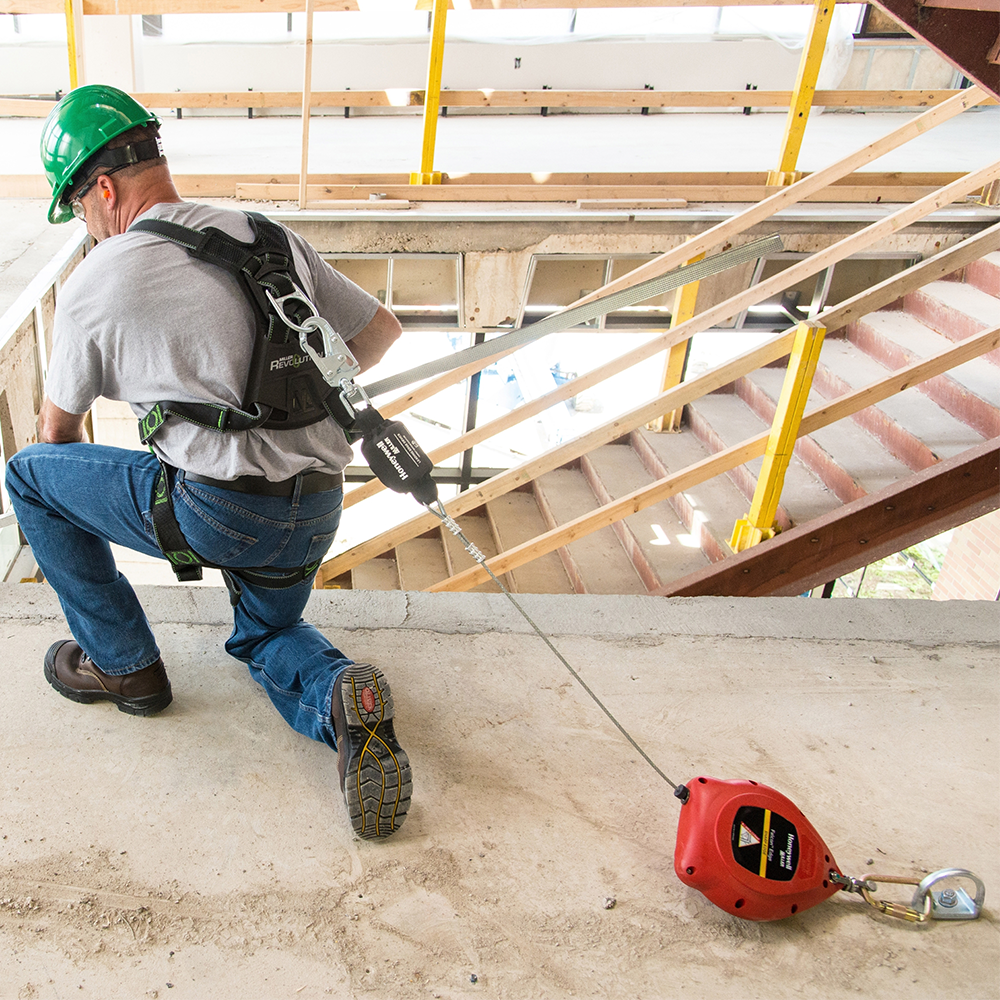Working at heights is an inherently risky endeavour. Whether it's on a construction site, maintenance task, or any other elevated work situation, the potential for accidents and falls is a constant concern. As responsible employers and workers, it is paramount to prioritise safety above all else. This includes understanding and utilising the right safety equipment designed to protect against these risks.
A retractable lanyard is a specialised fall protection device designed to arrest falls and minimise the impact forces on the user in the event of a fall. These lanyards consist of several key components, including:
- Housing: The retractable lanyard is housed in a durable casing designed to protect the inner components from environmental factors and wear.
- Cable or Webbing: The core of the retractable lanyard is the cable or webbing. This strong and resilient material is what extends and retracts, allowing users freedom of movement while maintaining safety.
- Connectors: On one end, retractable lanyards typically feature a connector that attaches to the user's harness. The other end connects to an anchor point or lifeline.
- Braking Mechanism: The retractable lanyard is equipped with a braking mechanism that activates when a fall occurs. This mechanism controls the rate at which the cable or webbing is released, reducing fall impact.
How Do Retractable Lanyards Work in Fall Protection?
Retractable lanyards are designed to provide fall arrest protection by automatically engaging when a sudden drop in tension is detected. Here's how they work:
- Normal Usage: During regular use, the retractable lanyard allows the user to move freely within a predefined radius. It keeps the cable or webbing taut to prevent tripping hazards while allowing unhindered work.
- Fall Detection: If a fall occurs, the lanyard's internal mechanism senses the sudden tension loss, triggering the braking system.
- Braking Action: The braking mechanism activates, rapidly decelerating the user's fall. This action reduces the forces transmitted to the user's body, minimizing the risk of injury.
- Fall Arrest: The retractable lanyard locks in place, preventing further descent. This ensures that the user remains suspended in a safe position until they can be rescued or self-rescue.
Choosing the Right Retractable Lanyard
Selecting the appropriate retractable lanyard for your specific working environment and task is crucial. Here are some factors to consider when making your choice:
- Weight Capacity: Ensure that the lanyard you choose has a weight capacity suitable for the user and any equipment they may be carrying. It should be rated to support the total weight in the event of a fall.
- Length: The length of the retractable lanyard should be appropriate for the height at which you'll be working. It should provide sufficient mobility without unnecessary slack.
- Attachment Points: Consider the attachment points on both ends of the lanyard. They should be compatible with your harness and anchor points. Compatibility ensures a secure connection.
- Safety Standards: Ensure that the retractable lanyard meets relevant safety standards and certifications in your region. Compliance with standards like ANSI or CSA is essential for safety and regulatory reasons.
- Environment: Consider the environmental conditions of your workplace. If you'll be working in harsh or corrosive environments, choose a lanyard designed to withstand those conditions.





